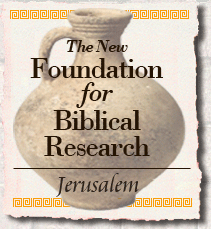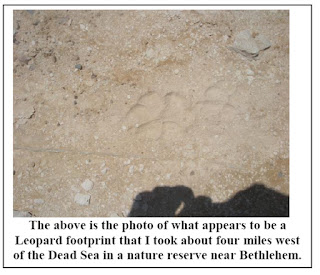It's not just what
the words of Scripture say that are important, but how, when and
where they are said that is also important
If you just focus on the simple information found in the Bible and do not take into consideration the issue of how the Bible is designed, you are missing opportunities for learning.
I have some posts on my blog about the importance of the order of the Biblical books and some of the things we can learn from that issue.
http://samuelmartin.blogspot.co.il/2012/10/the-major-role-of-women-in-formation-of.html
http://samuelmartin.blogspot.co.il/2011/08/normal-0-false-false-false.html
http://samuelmartin.blogspot.co.il/2012/07/the-original-order-of-old-testament.html
Note the following. If it is just the information and not also the design of the Bible that is important, why is it that in some Biblical texts, we find the almost exact same material found as in other Biblical texts?
The reason is, is that there is an important design found in Scripture and it is up to us to find out the deeper meanings of the text and not only just focus on what it is saying supposedly on the surface.
Note the following examples:
The fool says in his heart, “There is no God.”
They are corrupt, they do abominable deeds,
there is none who does good.
The LORD looks down from heaven on the children of man,
to see if there are any who understand,
who seek after God.
They have all turned aside; together they have become corrupt;
there is none who does good,
not even one.
Have they no knowledge, all the evildoers
who eat up my people as they eat bread
and do not call upon the LORD?
There they are in great terror,
for God is with the generation of the righteous.
You would shame the plans of the poor,
but the LORD is his refuge.
Oh, that salvation for Israel would come out of Zion!
When the LORD restores the fortunes of his people,
let Jacob rejoice, let Israel be glad.
(Psalm 14 ESV)
The fool says in his heart, “There is no God.”
They are corrupt, doing abominable iniquity;
there is none who does good.
God looks down from heaven
on the children of man
to see if there are any who understand,
who seek after God.
They have all fallen away;
together they have become corrupt;
there is none who does good,
not even one.
Have those who work evil no knowledge,
who eat up my people as they eat bread,
and do not call upon God?
There they are, in great terror,
where there is no terror!
For God scatters the bones of him who encamps against you;
you put them to shame, for God has rejected them.
Oh, that salvation for Israel would come out of Zion!
When God restores the fortunes of his people,
let Jacob rejoice, let Israel be glad.
(Psalm 53 ESV)
Both the above are virtually identical. The next two sets of examples are the same thing.
Make haste, O God, to deliver me!
O LORD, make haste to help me!
Let them be put to shame and confusion
who seek my life!
Let them be turned back and brought to dishonor
who delight in my hurt!
Let them turn back because of their shame
who say, “Aha, Aha!”
May all who seek you
rejoice and be glad in you!
May those who love your salvation
say evermore, “God is great!”
But I am poor and needy;
hasten to me, O God!
You are my help and my deliverer;
O LORD, do not delay!
(Psalm 70 ESV)
Be pleased, O LORD, to deliver me!
O LORD, make haste to help me!
Let those be put to shame and disappointed altogether
who seek to snatch away my life;
let those be turned back and brought to dishonor
who delight in my hurt!
Let those be appalled because of their shame
who say to me, “Aha, Aha!”
But may all who seek you
rejoice and be glad in you;
may those who love your salvation
say continually, “Great is the LORD!”
As for me, I am poor and needy,
but the Lord takes thought for me.
You are my help and my deliverer;
do not delay, O my God!
(Psalm 40:13-17 ESV)
Who will bring me to the fortified city?
Who will lead me to Edom?
Have you not rejected us, O God?
You do not go forth, O God, with our armies.
Oh, grant us help against the foe,
for vain is the salvation of man!
With God we shall do valiantly;
it is he who will tread down our foes.
(Psalm 60:9-12 ESV)
Who will bring me to the fortified city?
Who will lead me to Edom?
Have you not rejected us, O God?
You do not go out, O God, with our armies.
Oh grant us help against the foe,
for vain is the salvation of man!
With God we shall do valiantly;
it is he who will tread down our foes.
(Psalm 108:10-13 ESV)
Note: For more information, see Ernest L. Martin's "Restoring the Original Bible" (ASK Publication: Portland:OR, 1994) , pg.481.
Let's pay close attention to design and content. You may find that there is meaning which needs to be discovered.
Download Samuel Martin's free ebook - Thy Rod and Thy Staff, They Comfort Me: Christians and the Spanking Controversy here - http://whynottrainachild.com/2013/06/22/download-martins-book/
If you just focus on the simple information found in the Bible and do not take into consideration the issue of how the Bible is designed, you are missing opportunities for learning.
I have some posts on my blog about the importance of the order of the Biblical books and some of the things we can learn from that issue.
http://samuelmartin.blogspot.co.il/2012/10/the-major-role-of-women-in-formation-of.html
http://samuelmartin.blogspot.co.il/2011/08/normal-0-false-false-false.html
http://samuelmartin.blogspot.co.il/2012/07/the-original-order-of-old-testament.html
Note the following. If it is just the information and not also the design of the Bible that is important, why is it that in some Biblical texts, we find the almost exact same material found as in other Biblical texts?
The reason is, is that there is an important design found in Scripture and it is up to us to find out the deeper meanings of the text and not only just focus on what it is saying supposedly on the surface.
Note the following examples:
The fool says in his heart, “There is no God.”
They are corrupt, they do abominable deeds,
there is none who does good.
The LORD looks down from heaven on the children of man,
to see if there are any who understand,
who seek after God.
They have all turned aside; together they have become corrupt;
there is none who does good,
not even one.
Have they no knowledge, all the evildoers
who eat up my people as they eat bread
and do not call upon the LORD?
There they are in great terror,
for God is with the generation of the righteous.
You would shame the plans of the poor,
but the LORD is his refuge.
Oh, that salvation for Israel would come out of Zion!
When the LORD restores the fortunes of his people,
let Jacob rejoice, let Israel be glad.
(Psalm 14 ESV)
The fool says in his heart, “There is no God.”
They are corrupt, doing abominable iniquity;
there is none who does good.
God looks down from heaven
on the children of man
to see if there are any who understand,
who seek after God.
They have all fallen away;
together they have become corrupt;
there is none who does good,
not even one.
Have those who work evil no knowledge,
who eat up my people as they eat bread,
and do not call upon God?
There they are, in great terror,
where there is no terror!
For God scatters the bones of him who encamps against you;
you put them to shame, for God has rejected them.
Oh, that salvation for Israel would come out of Zion!
When God restores the fortunes of his people,
let Jacob rejoice, let Israel be glad.
(Psalm 53 ESV)
Both the above are virtually identical. The next two sets of examples are the same thing.
Make haste, O God, to deliver me!
O LORD, make haste to help me!
Let them be put to shame and confusion
who seek my life!
Let them be turned back and brought to dishonor
who delight in my hurt!
Let them turn back because of their shame
who say, “Aha, Aha!”
May all who seek you
rejoice and be glad in you!
May those who love your salvation
say evermore, “God is great!”
But I am poor and needy;
hasten to me, O God!
You are my help and my deliverer;
O LORD, do not delay!
(Psalm 70 ESV)
Be pleased, O LORD, to deliver me!
O LORD, make haste to help me!
Let those be put to shame and disappointed altogether
who seek to snatch away my life;
let those be turned back and brought to dishonor
who delight in my hurt!
Let those be appalled because of their shame
who say to me, “Aha, Aha!”
But may all who seek you
rejoice and be glad in you;
may those who love your salvation
say continually, “Great is the LORD!”
As for me, I am poor and needy,
but the Lord takes thought for me.
You are my help and my deliverer;
do not delay, O my God!
(Psalm 40:13-17 ESV)
Who will bring me to the fortified city?
Who will lead me to Edom?
Have you not rejected us, O God?
You do not go forth, O God, with our armies.
Oh, grant us help against the foe,
for vain is the salvation of man!
With God we shall do valiantly;
it is he who will tread down our foes.
(Psalm 60:9-12 ESV)
Who will bring me to the fortified city?
Who will lead me to Edom?
Have you not rejected us, O God?
You do not go out, O God, with our armies.
Oh grant us help against the foe,
for vain is the salvation of man!
With God we shall do valiantly;
it is he who will tread down our foes.
(Psalm 108:10-13 ESV)
Note: For more information, see Ernest L. Martin's "Restoring the Original Bible" (ASK Publication: Portland:OR, 1994) , pg.481.
Let's pay close attention to design and content. You may find that there is meaning which needs to be discovered.
Download Samuel Martin's free ebook - Thy Rod and Thy Staff, They Comfort Me: Christians and the Spanking Controversy here - http://whynottrainachild.com/2013/06/22/download-martins-book/






